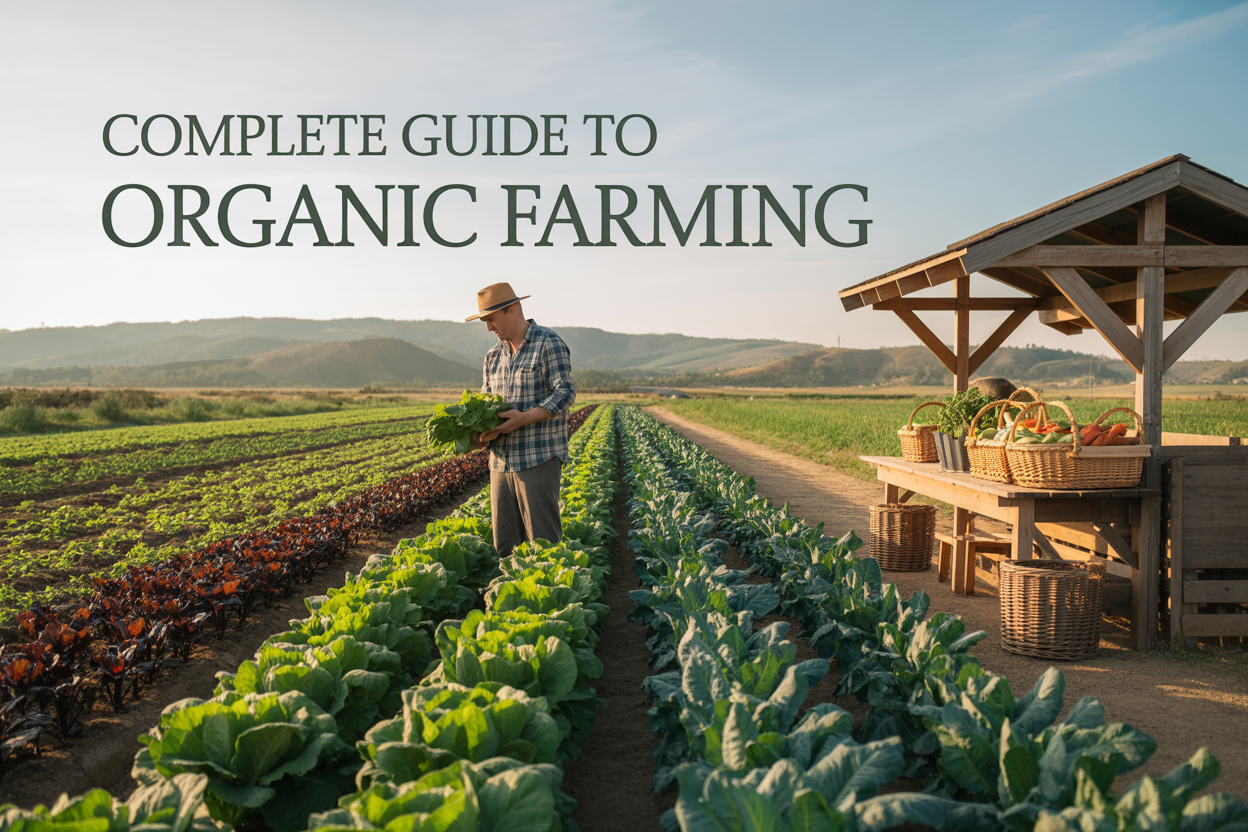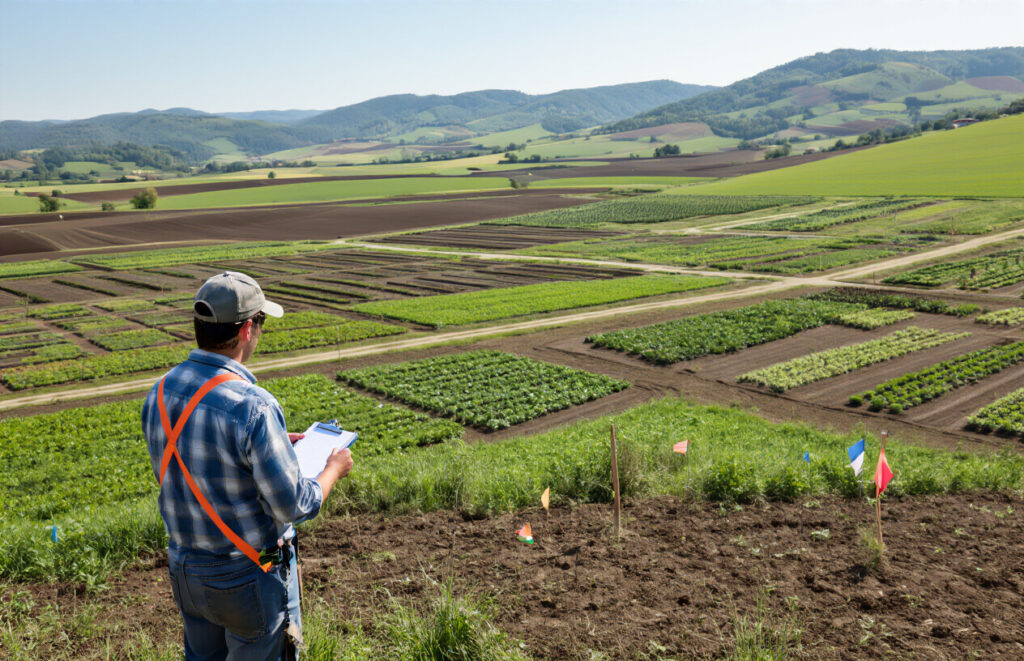Your cart is currently empty!

Complete Guide to Starting Your Organic Farm: Essential Practices for New Growers
Starting an organic farm can transform your passion for sustainable agriculture into a thriving business, but success requires hardwork with proper planning and knowledge of essential practices. This complete guide to starting your organic farm is designed for aspiring farmers, homesteaders looking to scale up, and career changers ready to dive into sustainable agriculture.
We’ll walk you through the critical first steps that separate successful organic operations from those that struggle to succed as organic farmer. You’ll learn how to plan your farm layout and determine the right size for your goals and budget. We’ll also break down the organic certification requirements so you know exactly what standards you’ll need to meet and when to start the application process.
From building healthy soil that produces robust crops to selecting varieties that thrive in your specific region, this guide covers the foundational knowledge every new organic grower needs to create a sustainable and profitable farm.
what we will learn throught the blog:
- Planning Water Access and Irrigation Systems
- Designing Efficient Field Layouts for Crop Rotation
Planning Your Organic Farm Layout and Size

Determining Optimal Farm Size Based on Goals and Resources
Optimal Farm Size for Beginners
Starting with the right farm size makes all the difference between success and overwhelm. Your ideal acre size depends on what you want to achieve and what you’re working with. Beginning farmers often dream big, but starting smaller gives you room to learn without drowning in debt or responsibilities.
Financial Resources for Beginners
Consider your financial resources first. Each acre requires investment in seeds, soil amendments, tools, and labor. A good rule of thumb: start with what you can afford to lose while still covering basic expenses for two growing seasons. Most successful organic farmers recommend beginning with 1-5 acres unless you have significant farming experience.
Time Management According to Farm Size
Your time commitment shapes farm size too. One person can reasonably manage 2-3 acres of diverse vegetables working part-time, or up to 10 acres working full-time with efficient systems. Factor in off-farm work, family obligations, and the learning curve of organic methods.
Market knowledge for your Crop
Market demand in your area matters greatly. Research local farmers markets, CSA interest, and restaurant needs. A smaller farm serving high-value niche markets often generates more profit per acre than larger operations focused on commodity crops.
Physical limitations play a role as well. Sloped terrain, poor soil, or limited water access might mean working with fewer acres more intensively rather than expanding horizontally.
Designing Efficient Field Layouts for Crop Rotation
Smart field design sets up your rotation system for long-term success. Divide your growing space into at least four sections, allowing you to rotate crop families and maintain soil health naturally. This prevents disease buildup and nutrient depletion that plague monoculture systems.
Create rectangular fields rather than odd shapes whenever possible. Straight rows make cultivation, harvesting, and record-keeping much easier. Plan for 12-foot wide beds with 3-foot pathways, giving you room for wheelbarrows and small tractors while maximizing growing space.
Group crops by their water, fertility, and management needs. Place heavy feeders like tomatoes and squash together where you can concentrate compost and organic matter. Follow these with light feeders like herbs and root vegetables. This natural progression matches how nutrients cycle through your soil.
Consider sun patterns and microclimates when positioning different crop zones. Place tall crops like corn or trellised beans on the north side so they don’t shade shorter plants. Use natural windbreaks or create them with perennial crops to protect sensitive vegetables.
Build in space for cover crops within your rotation plan. Dedicate specific areas for nitrogen-fixing legumes, soil-building grasses, and pest-confusing polycultures. These areas aren’t “lost” production space – they’re investments in future soil fertility and pest management.
Planning Water Access and Irrigation Systems
Water access can make or break your organic farm, so plan this carefully from the start. Evaluate your water sources: wells, municipal water, ponds, or streams. Each comes with different costs, reliability issues, and potential restrictions you need to understand upfront.
Calculate your water needs based on crop selection and local rainfall patterns. Vegetables typically need 1-2 inches per week, but this varies significantly by plant type and growth stage. Keep detailed records of rainfall and irrigation to refine your estimates over time.
Drip irrigation offers the best efficiency for most organic vegetable operations. It delivers water directly to plant roots, reduces weed pressure, and minimizes water waste. Plan your field layout around irrigation zones – typically 100-200 feet of drip line per zone depending on your water pressure and flow rate.
Install main water lines underground where possible to prevent damage from cultivation equipment. Use quick-connect fittings throughout your system for easy maintenance and seasonal adjustments. Plan for expansion by oversizing main lines and installing extra connection points.
Don’t overlook water storage options. Tanks or ponds provide backup during dry spells and can collect rainwater for irrigation. Even a modest 1,000-gallon tank extends your growing season and provides peace of mind during droughts.
Planning Water Access and Irrigation Systems
Proper infrastructure protects your harvest investment and adds value to your crops. Plan these areas early since they often require permits and significant upfront costs. Location matters – place storage near fields but accessible to delivery vehicles and customers.
A basic pack shed needs electricity, running water, and good ventilation. Plan for 400-600 square feet per acre of intensive vegetable production. Include space for washing, packing, and temporary storage of harvested crops. Concrete floors with drains make cleaning easier and meet food safety requirements.
Cold storage extends your selling season and reduces post-harvest losses. A walk-in cooler pays for itself quickly on most organic farms. Size it based on your peak harvest volume – typically 6-8 cubic feet per 1,000 square feet of growing area. Include separate temperature zones for different crops when possible.
Equipment storage protects your tools and machinery from weather damage. Plan for tractors, tillers, mowers, and hand tools. Include workspace for maintenance and repair. A 30×40 foot building handles most small farm equipment needs with room for growth.
Consider value-added processing early in your planning. Simple washing and packaging can double crop values, but requires separate facilities meeting health department standards. Research local regulations before designing these spaces since requirements vary significantly by location and processing type.
Leave a Reply